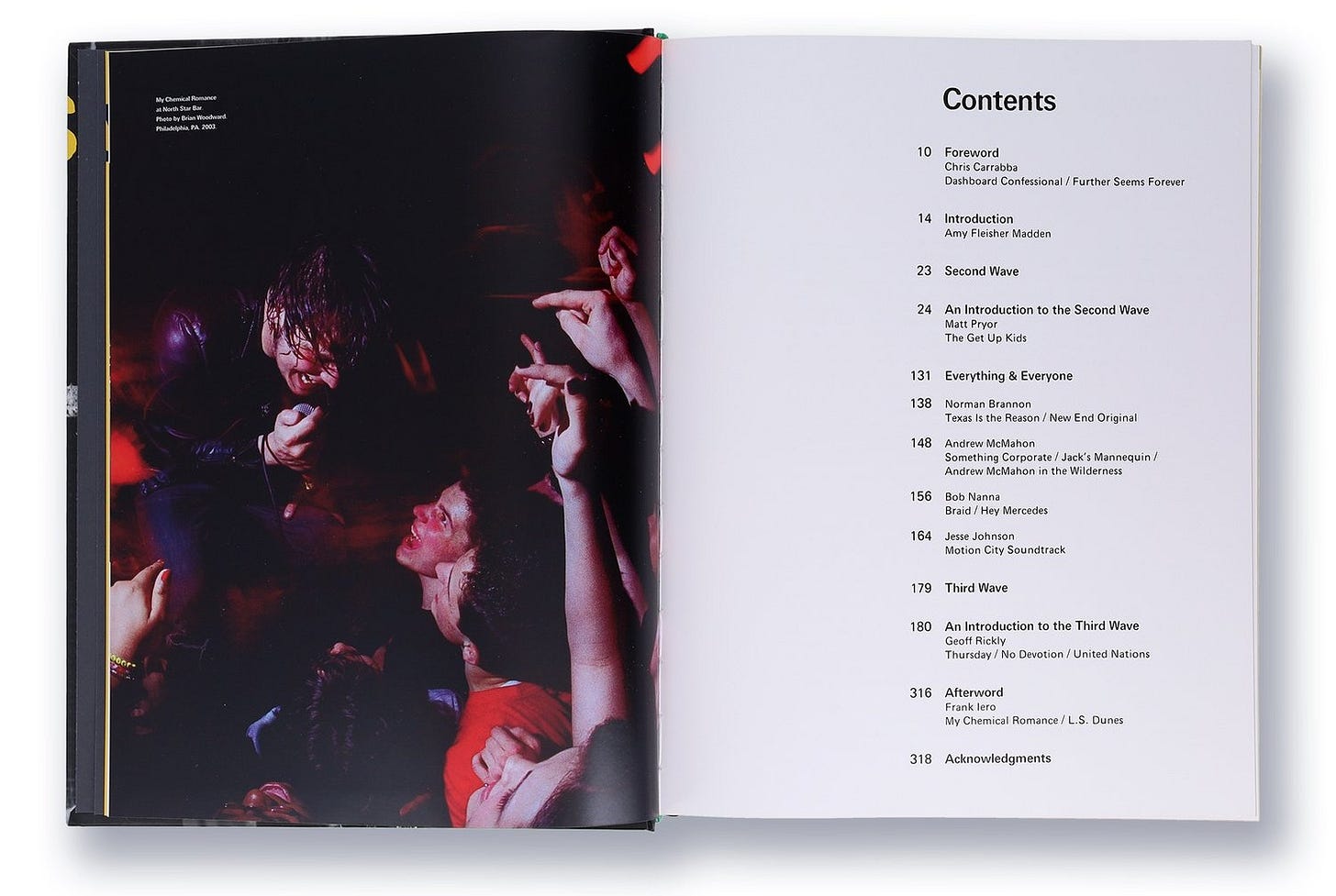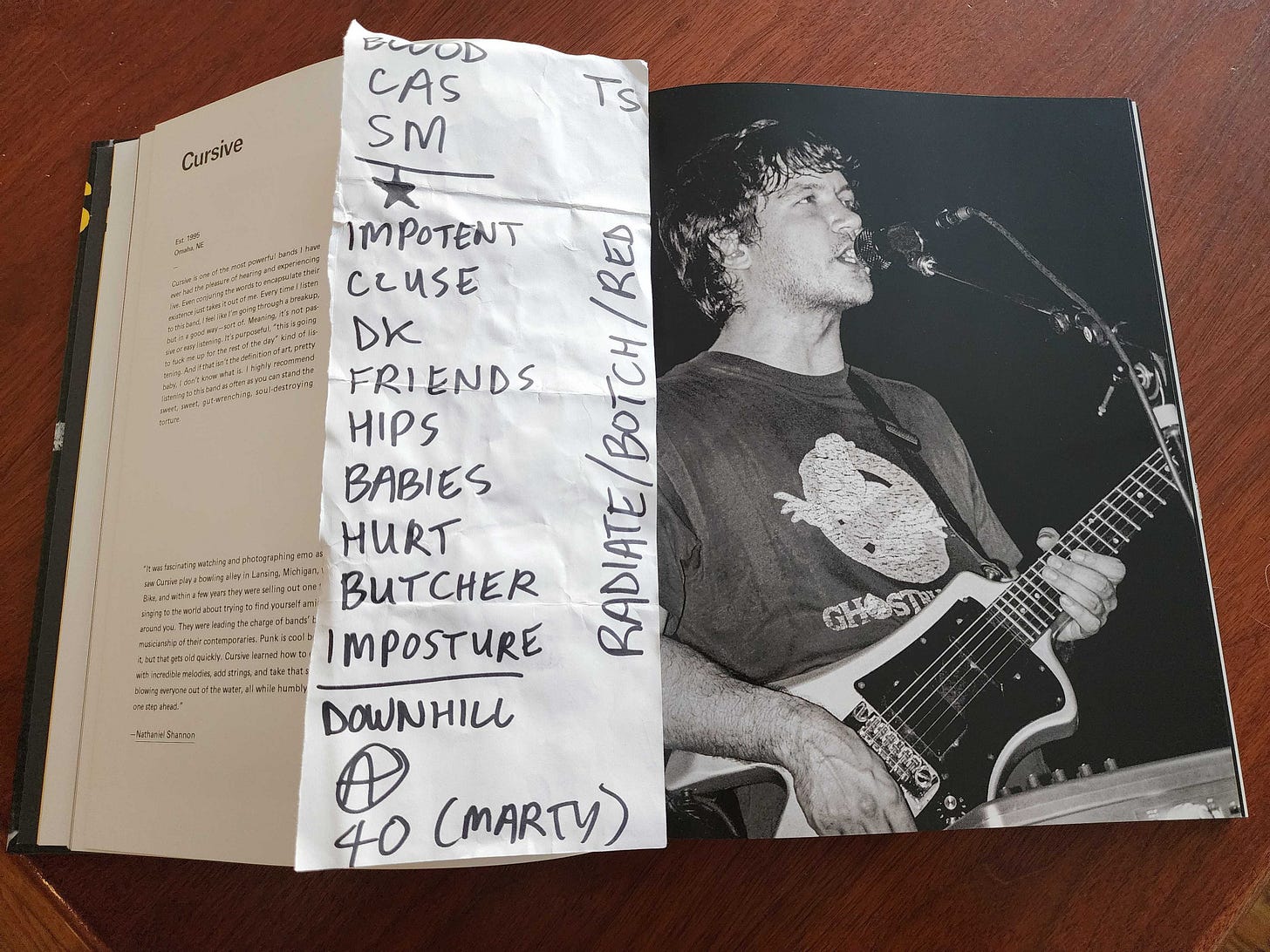
Amy Fleisher Madden’s Negatives isn’t just a book; it’s a Stargate straight to the heart of emo’s golden age (and if you lived through it, you definitely got that reference). If you’ve ever accidentally unplugged a guitar amp at a basement show, hastily scribbled a setlist on the back of your ticket, or chipped in with a group to rent a VFW just to turn around and buy a ticket to that very show, this book is for you.
Reading Negatives feels like a guided meditation for emo nostalgia—drawing you back into the sweaty chaos, raw emotions, and unfiltered connections that defined a movement. It leaves you grounded in the beauty, the bittersweetness, and the undeniable impact of a scene that continues to resonate across generations.

One of the book’s greatest achievements is how it captures the emotional weight of the era. It doesn’t shy away from the fact that for many, this music was a lifeline. Emo was never just about sadness; it was about finding hope and connection in a world that often felt indifferent. Negatives reminds readers that even if the eyeliner has faded and the wristbands have been boxed away, the moments spent screaming lyrics in those crowds mattered. Those years shaped us, and their impact continues to unfold in ways we’re only beginning to understand (look at Fall Out Boy influencing Machine Gun Kelly influencing Juice WRLD who just released a single with Fall Out Boy).
These Photographs are Proof
The photographs in Negatives are nothing short of extraordinary, capturing the raw, unvarnished essence of a movement that thrived on imperfection and honesty. The shots have a striking intimacy. They pull you into the sweat-soaked chaos of a basement show or the quiet camaraderie of bands between sets. These aren’t glossy, posed portraits, instead they’re visceral and immediate, capturing musicians mid-scream, crowds surging to the beat, and the frenetic energy of a culture built on connection and catharsis. Think Charles Peterson at peak form.
The variety of perspectives is remarkable; Madden’s selection emphasizes the DIY ethos of the era. You can see it in the imperfect lighting, the graininess of some shots, and the way they seem almost stolen from the moment. There are candid backstage moments, crowd shots illuminated by stage lights, bands lost in the moment of performance, and hundreds of small details that capture the authenticity that attracted so many to the scene.

The photos themselves pull their weight and speak volumes, capturing fleeting moments that feel both universal and deeply personal. A single shot might reveal the tension of a pre-show soundcheck, the explosive joy of a band mid-set, or the quiet exhaustion of a late-night van ride. These images evoke the scene’s atmosphere, its energy, and its heart.
The framing, often tight and close, draws you into the action, while the occasional wide shot places you right in the middle of a crowd, surrounded by outstretched hands and euphoric faces. Every photo feels intentional, a visual poem that speaks to the raw, unfiltered spirit of the emo movement.
Stories of the Years
But Negatives isn’t just about the visuals—it’s a deeply emotional narrative, interwoven with essays and reflections from voices like Thursday’s Geoff Rickly and My Chem’s Frank Iero. Their words pull back the curtain, revealing an insider’s view of a movement that was about so much more than music. These aren’t polished or sanitized stories; they’re raw, honest, and unafraid to dwell on the bittersweetness of a moment that shaped lives but has since slipped away. The balance between heartfelt nostalgia and unflinching realism is masterful. This is a love letter to an imperfect, magical time, one that doesn’t shy away from the cracks but celebrates them to make you fall in love all over again.

Amy Madden’s editorial choices deserve particular praise here. The pacing is masterful like a setlist. Heavy, poignant moments are interspersed with lighter, anecdotal memories, allowing the reader to breathe between emotional highs. The blend of photography and narrative feels like flipping through a zine you’d pick up at any of these shows.
Not Burn Out, Not Fade Away
Negatives is deeply rooted in the personal experiences of those who lived it. For readers unfamiliar with the scene, some nuances might be lost or feel overly idealized, like the energy of a packed VFW that smells like beer, or the pride of operating a tour on a DIY budget. For those who were there, paging though Negatives is like talking to a Myspace friend who remembers everything you’d forgotten. And for those who missed it, it’s a visceral, sincere introduction to a world that left an indelible mark on countless lives.
What makes Negatives truly remarkable is how it preserves the scene with such authenticity that it ensures its spirit will live on. By combining raw, evocative photography with unfiltered stories, the book immortalizes a culture that thrived on connection, vulnerability, and community. It’s a bridge to the future for anyone who finds solace and inspiration in the music and memories of second and third wave emo.
Highly recommend.





